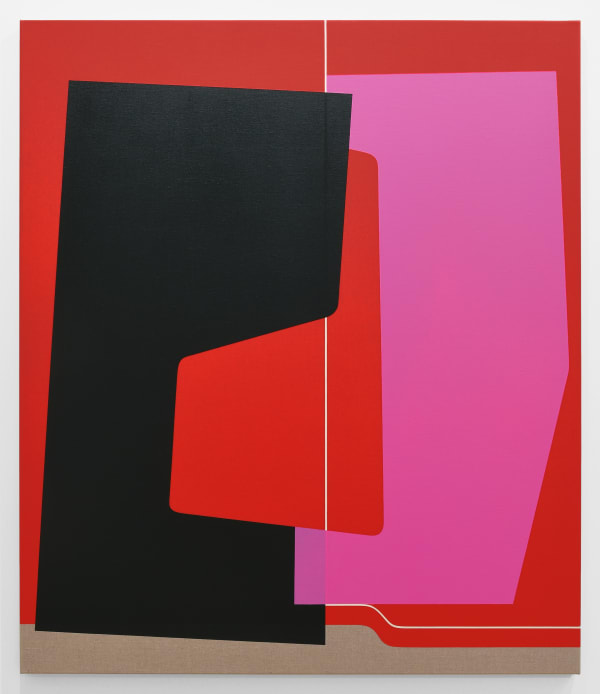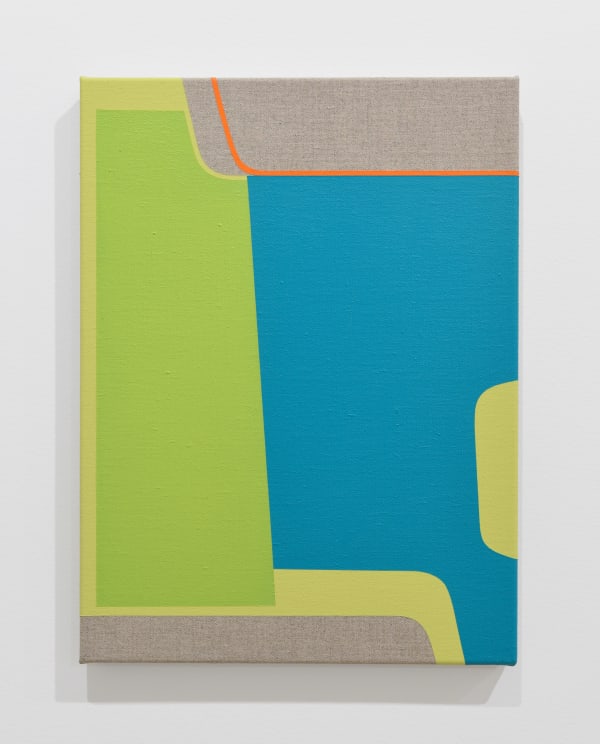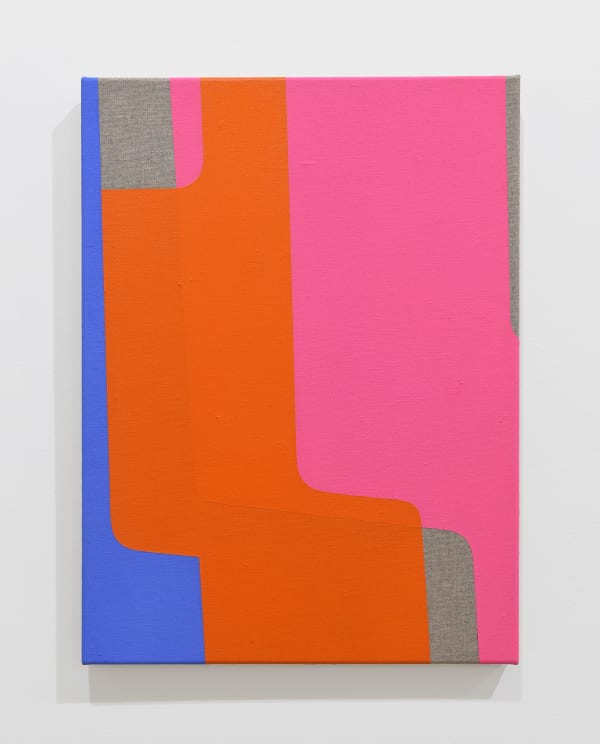Silience: Matthew Browne
In Silience, Browne translates the formal discourse of abstract painting into something that can be readily grasped in visually appealing colours and quietly satisfying forms. He also invites us to enjoy the mystery of communication, and that which is inevitably lost in translation.
austice
n. a wistful omen of the first sign of autumn—a subtle coolness in the shadows, a rustling of dead leaves abandoned on the sidewalk, or a long skein of geese sweeping over your head like the second hand of a clock.
- John Koenig, The Dictionary of Obscure Sorrows.
Paintings cannot be derived from nothing. Even the most rarefied forms of abstract painting will have an underlying frame of reference, some connection to the natural world – even if it is pared back to the material substance of the support and paint itself. By definition, abstract painting doesn’t depict any subject matter literally. Yet, it is an innate human tendency to seek recognisable forms or patterns where none necessarily exist – so much so that a term exists to describe it, ‘pareidolia’. A common experience of this is seeing animals or faces in cloud formations. Such projection almost inevitably takes place when one is presented with a work of abstract painting.
Matthew Browne’s paintings presented in Silience provide excellent cases in point. On one level, these paintings present hard-edged arrangements of colour and form with a meticulous evenly finished application of paint. By this reading, the works are overtly formalist, and connected to a long tradition of abstract painting, meshed in a discourse of surface, colour, form, and grids. But, in their subtleties, there is also something more open-ended and exploratory at play. Browne has described a process that starts in exploring formal relationships in colour and form but develops greater complexity as the work progresses.
There is a subtle but palpable visual tension in these works. There are areas of soft transparency in some of the hard-edged linear forms. Subtle differences in underlying surface treatment create areas of discrepancy in a seemingly uniform block of colour. Sharp lines meet the textural weave of linen, and the heterogeneous nature of matter subtly undermines the precision of the calculated shape. Different grades of substrate bring faint differences to the resolve of the paint. Overlapping areas of colour feature distinctions in paint medium, creating contrasting finishes. Matte flashe meets glossy oil. Such material frictions are part of the essence of painting, they arise from the specific properties of the materials themselves.
Browne is interested in the perception of the viewer and their relationship to the work. Too much precision, in his consideration, can make a work impenetrable. Whereas an element of material vulnerability can bring the work back to the relatable. This is a necessary aspect of the work – painting, after all, is a form of communication, though what it communicates is often outside of verbal language. For Browne, a key aspect of what the paintings communicate is stillness, a respite from the cacophony of the world.
Browne’s process of titling taps into many of the themes of language, along with larger discourses around abstract painting. These titles are somewhat mystifying and deliberately so. They invite the viewer to look at the painting with wonder, and they convey some of the complexity of communication. Browne cites The Dictionary of Obscure Sorrows by John Koenig as a source for some of the titles. Koenig’s book, published in 2021, provides made-up, borrowed, and reinvented words to give expression to complex emotions that many encounter in the contemporary world. The artist also draws on words and expressions drawn from Gaelic, Irish, and Cornish language – part of his heritage. Some of the titles are incredibly simple – for instance the Gaelic words for the sky or the sun.
Painting is a form of communication. It has the same level of complexity as spoken or written language. Encountering it can be like hearing words spoken in a foreign tongue. Translation can help, though there can also be an enchanting aspect to not fully understanding. In Silience, Browne translates the formal discourse of abstract painting into something that can be readily grasped in visually appealing colours and quietly satisfying forms. He also invites us to enjoy the mystery of communication, and that which is inevitably lost in translation.






















